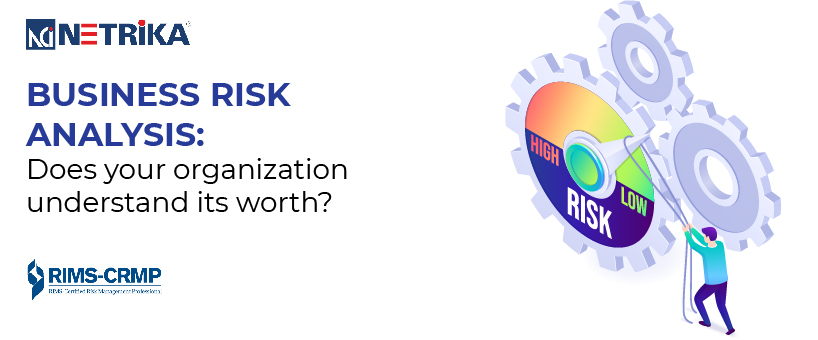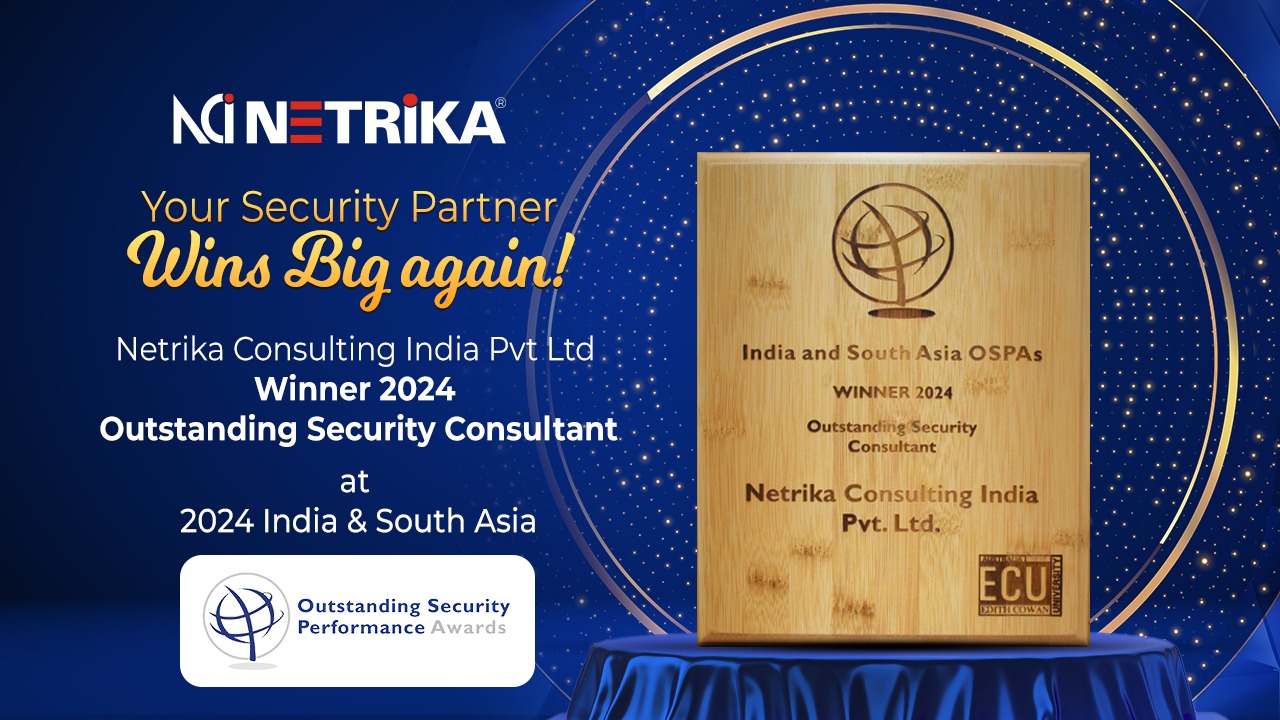Analyzing the level of risk for organization safety
- April 28, 2022
- Posted by: marketing@netrika.com
- Category: Blogs

While a business collaboration is in its design phase, predicting its profitability, brand expansion, and risk structure is complex. This involves incorporating tools and technologies to access the revenue, cost, and risk. Profitability and more such aspects are introduced. However, these techniques do not give insights into the business market uncertainty and its future characteristics. Moreover, in some business design collaborations, the uncertainty encompassing security or market risks is too high that managing and averting risks becomes highly challenging.
Therefore, certified risk management professionals propose and introduce a risk analyzing approach that is based on predictive business architecture. This approach is capable of analytical, sound reasoning focussing on financial and profitability risks.
Risk Analysis: what is it, and when should you implement it?
The global business world is rife with uncertainties and security risks that can loot the company of its finances and dent its reputation. This is exactly why businesses need risk analysis and forms a vital model for professionals.
But what is risk analysis?
Risk analysis is a strategic process that enables a certified risk management professional to guide businesses in identifying and managing the potential risks that undermine business ventures or initiatives. While risk analysis is also applied outside of businesses for personal purposes, its key role encapsulates the professional world.
Once the potential risks are identified, a certified risk management professional estimates the possible impact of those risks and what intensity of damage they can cause. This strategy enables to determine and materialize the likelihood of the risks.
While risk analysis can be a complex element, as the certified risk management professional would draw detailed information on financial data, business design, collaborations, security policies & protocols, market forecasts, security tools, etc, the correct use of these tools can save your time, reputation and finances.
Knowing risk analysis and its tools/technologies is not significant if the professional does not know when to use risk analysis. To fool-proof organizational security, risk analysis must be deployed in the right place at the right time. For instance, risk analysis needs to perform when planning for a business project and deciding whether to move ahead with the project. It should also be incorporated when you are enhancing the safety against potential risks at your workplace, preparing for natural calamities, staff iteration, technology failure, etc., and changing the business environment or adapting to changes in government policies.
A certified risk management certification works through the frequency and probability of a risk and its consequences to analyze risks. Usually, the risk is either external or internal and affects the organization’s finances, marketing, operations, or workforce. In comparison to internal, external risks are difficult to comprehend and control. These risks include changing the economy, new competitors, natural disasters, government regulations, and consumer demand changes.
While there is no one way of assessing business risk, it is sure to be 100% effective in judging the intensity and level of risk. to assess business risk. However, using the following steps for risk assessment gives certified risk management professionals a clear indication of business risk.
Analyzing the level of risk through strategic flow
1. Design a framework– There must be a framework and a contingency plan that mentions all the preventive and corrective steps to take in case of business risk. It must also define the following:
- Identify Risk: The employees of an enterprise must be vigilant enough to identify security risks. These risks can be insider theft, phishing, cloud security breaches, IoT, or AI-related, amongst others. This step helps certified risk management professionals identify which situations bring risk to the business finances depending on the industrial vertical, location, and business type. Further to this, the certified risk management professional considers the goals that need to be met while following this step. Risks come in different shapes and sizes for which a certified risk professional understands the source of risk to get a clear perspective on identifying business risks:
- i) Human – Illness, death, injury, or other loss of a key individual.
- ii) Operational – Disturbance to operations, supplies access to essential assets or distribution failures.
iii) Reputational – Loss of employee or customer confidence or market reputation loss.
- iv) Procedural – Failures of the internal system, control, or accountability.
- v) Project – Going beyond budget, time-consuming key tasks, or issues with product or service quality.
- vi) Financial – Business failure, stock market fluctuations, non-availability of funding, or changes in interest rate.
vii) Technical –Technology disruption or technical failure.
viii) Natural – Weather, natural disasters, or epidemics/pandemics.
- ix) Political – Changes in government policy, public opinion, tax, or foreign influence.
- x) Structural – Hazardous chemicals, poor lighting, or risk to human resources.
- Analyze Risk: It is pertinent to understand and analyze the type of business risk that might affect an organization’s network or system.
- Mitigation measures: To contain the impact of risk is the last step to be defined. Employees must be trained well on this concept to apply it during the business risk.
2. Response task force: Since all the employees cannot respond to a breach, there must be a team that comes into action during an incident. This team, specifically the IT personnel should be aware of the vulnerable areas and instantly take corrective action during an unauthorized attempt to steal data.
- Deploy tools and techniques: The right tools to combat a business risk can also save a company’s finances and reputation. There are many advanced software and methods available besides the skill set of certified risk management professionals. The enterprise must have encryption, multi-step password protection, and the use of a VPN to name a few. Regularly updating the software, deploying firewalls, and training employees on these concepts can save millions of companies.
- Document risks: A certified risk management professional defines them in a document upon listing the potential business risks. This helps them to weigh the effect of risk elements and intercept how much damage those risk elements would cause.
- Determine controls: After a certified risk management professional understands potential risks, they find ways to control them
- , which will help minimize the impact.
- Review periodically: Business risk assessment is not considered a one-time commitment, rather is a long-term concept, therefore, a frequent, or periodic risk management process is essential to businesses. Moreover, a certified risk management professional overlooks new risks that might seem relevant to the earlier risk assessment.
Risk Analysis has been considered a proven method of risk identification, assessing its contributing factors and examining the potential risks that your organization might face in the future. Therefore, it is essential that a certified risk management professional weigh all the possible risk impacts to the business and be mindful of the cost involved, ethics affected, and employee safety.
Neutrik’s Collaborates with RIMS To Deliver an Accredited Risk Management Certification
Netrika offers a comprehensive fleet of training programs to guide professionals through their career journeys. We collaborate with RIMS, the only accredited risk management certification globally, to deliver the certified risk management professional certification across industry verticals.
Through the value-adding CRMP certification course, Netrika helps professionals gain professional visibility and credibility while enhancing their job security across the globe. We partner with RIMS to provide complete facilities from supporting professionals with the eligibility criterion, registration process, and the entire training program.
The RIMS-CRMP certification curation from Netrika aims to assist aspiring certified risk management professionals in understanding how to build a rich landscape that oversees the organizational security risks while being a catalyst in their career.

